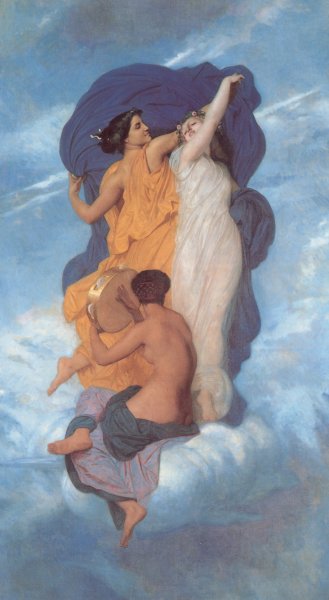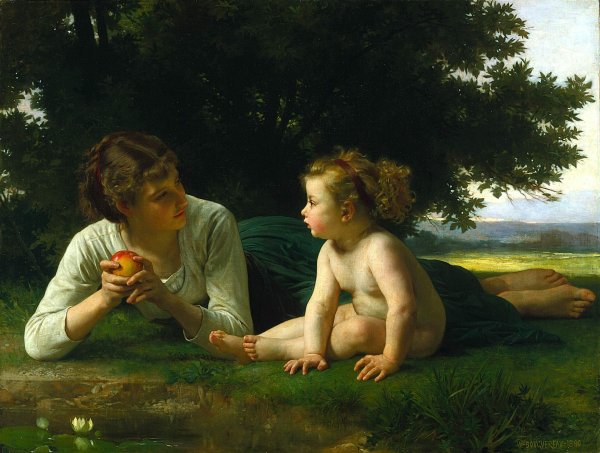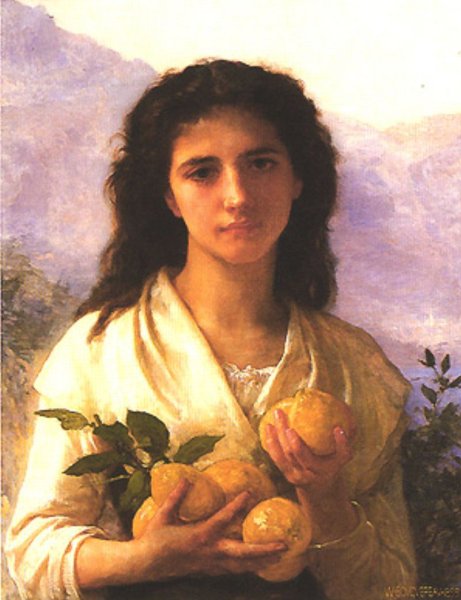William-Adolphe Bouguereau Biography In Details
Life and career

William-Adolphe Bouguereau was born in La Rochelle, France on November 30, 1825, into a family of wine and olive oil merchants. He seemed destined to join the family business but for the intervention of his uncle Eugene, a curate, who taught him classical and biblical subjects, and arranged for Bouguereau to go to high school. Bouguereau showed artistic talent early on and his father was convinced by a client to send him to the Ecole des Beaux-Arts in Bordeaux, where he won first prize in figure painting for a depiction of Saint Roch. To earn extra money, he designed labels for jams and preserves.
Through his uncle, Bouguereau was given a commission to paint portraits of parishioners, and when his aunt matched the sum he earned, Bouguereau went to Paris and became a student at the Ecole des Beaux-Arts. To supplement his formal training in drawing, he attended anatomical dissections and studied historical costumes and archeology. He was admitted to the studio of Franccois-Edouard Picot, where he studied painting in the academic style. Academic painting placed the highest status on historical and mythological subjects and Bouguereau won the coveted Prix de Rome in 1850, with his Zenobia Found by Shepherds on the Banks of the Araxes. His reward was a stay at the Villa Medici in Rome, Italy, where in addition to formal lessons he was able to study first-hand the Renaissance artists and their masterpieces.
Bouguereau, completely in tune with the traditional Academic style, exhibited at the annual exhibitions of the Paris Salon for his entire working life.
An early reviewer stated, "M. Bouguereau has a natural instinct and knowledge of contour. The eurythmie of the human body preoccupies him, and in recalling the happy results which, in this genre, the ancients and the artists of the sixteenth century arrived at, one can only congratulate M. Bouguereau in attempting to follow in their footsteps Raphael was inspired by the ancients and no one accused him of not being original."
Raphael was a favorite of Bouguereau and he took this review as a high compliment. He had fulfilled one of the requirements of the Prix de Rome by completing a old-master copy of Raphael's The Triumph of Galatea. In many of his works, he followed the same classical approach to composition, form, and subject matter.
In 1856, he married Marie-Nelly Monchablon and subsequently had five children. By the late 1850's, he made strong connections with art dealers, particularly Paul Durand-Ruel (later the champion of the Impressionists), who helped clients buy paintings from artists who exhibited at the Salons. The Salons annually drew over 300,000 people, thereby providing valuable exposure to exhibited artists. Bouguereau's fame extended to England by the 1860's and then he bought a large house and studio in Montparnasse with his growing income.
Bouguereau was a staunch traditionalist whose realistic genre paintings and mythological themes were modern interpretations of Classical subjects-both pagan and Christian-with a heavy concentration on the female human body. Although he created an idealized world, his almost photo-realistic style brought to life his goddesses, nymphs, bathers, shepherdesses, and madonnas in a way which was very appealing to rich art patrons of his time. Some critics, however, preferred the honesty of Jean-Francois Millet's truer-to-life depiction of hard-working farmers and laborers.
Bouguereau employed traditional methods of working up a painting, including detailed pencil studies and oil sketches, and his careful method resulted in a pleasing and accurate rendering of the human form. His painting of skin, hands, and feet was particularly admired. He also used some of the religious and erotic symbolism of the Old Masters, such as the "broken pitcher" which connoted lost innocence.
One of the rewards of staying within the Academic style and doing well in the Salons was receiving commissions to decorate private houses, public buildings, and churches. As was typical of these commissions, sometimes Bouguereau would paint in his own style, and other times he had to conform to an existing group style. Early on, Bouguereau was commissioned in all three venues, which added enormously to his prestige and fame. He also made reductions of his public paintings for sale to patrons, of which The Annunciation (1888) is an example. He was also a successful portrait painter though many of his paintings of wealthy patrons still remain in private hands.
Bouguereau steadily gained the honors of the Academy, reaching Life Member in 1876, and Commander of the Legion of Honor and Grand Medal of Honor in 1885. He began to teach drawing at the Academie Julian in 1875, a co-ed art institution independent of the Ecole des Beaux-Arts, with no entrance exams and with nominal fees.
In 1877, both his wife and infant son died. At a rather advanced age, Bouguereau was married for the second time in 1896, to fellow artist Elizabeth Jane Gardner Bouguereau, one of his pupils. He also used his influence to open many French art institutions to women for the first time, including the Academie francaise.
Near the end of his life he described his love of his art, "Each day I go to my studio full of joy; in the evening when obliged to stop because of darkness I can scarcely wait for the next morning to come if I cannot give myself to my dear painting I am miserable". He painted eight hundred and twenty-six paintings.
Bouguereau died in La Rochelle at age 80 from heart disease.
Fame and fall

In his own time, Bouguereau was considered to be one of the greatest painters in the world by the Academic art community, and simultaneously he was reviled by the avant-garde. He also gained wide fame in Belgium, Holland, Spain, and in the United States, and commanded high prices.
Bouguereau's career was a nearly straight up ascent with hardly a setback. To many, he epitomized taste and refinement, and a respect for tradition. To others, he was a competent technician stuck in the past. Degas and his associates used the term "Bougeuereaute" in a derogatory manner to describe any artistic style reliant on "slick and artificial surfaces". In 1900, Degas and Monet reportedly named him as most likely to be remembered as the greatest 19th-century French painter by the year 2000, according to chairman Fred Ross of the Art Renewal Center - although with Degas' famous trenchant wit, and the aesthetic tendencies of the two Impressionists, it is possible the statement was meant as an ironic comment on the taste of the future public.
Bouguereau's works were eagerly bought by American millionaires who considered him the most important French artist of that time. But after 1920, Bouguereau fell into disrepute, due in part to changing tastes and partly to his staunch opposition to the Impressionists who were finally gaining acceptance. For decades following, his name was not even mentioned in encyclopedias.
Legacy

In 1974, the New York Cultural Center staged a show of Bouguereau's work as a curiosity. In 1984, the Borghi Gallery hosted the commercial show of his 23 oil paintings and 1 drawing. In the same year a major exhibition was organized by the Montreal Museum of Fine Arts, in Canada. The exhibition opened at the Musee du Petit-Palais, in Paris, traveled to The Wadsworth Atheneum in Hartford, and concluded in Montreal. This was the beginning of renewal of interest about Bouguereau. In 1997 Mark Borghi and Laura Borghi organized an early Internet exhibition.
In 2000, the Art Renewal Center was founded by Fred Ross and like-minded artists and collectors to oppose Modernism and advocate earlier values of art. They particularly champion the work of Bouguereau, who Ross considers is "deserving of the highest accolades in the art world."
Today, over one hundred museums throughout the world exhibit Bouguereau's works. (From wikipedia)




